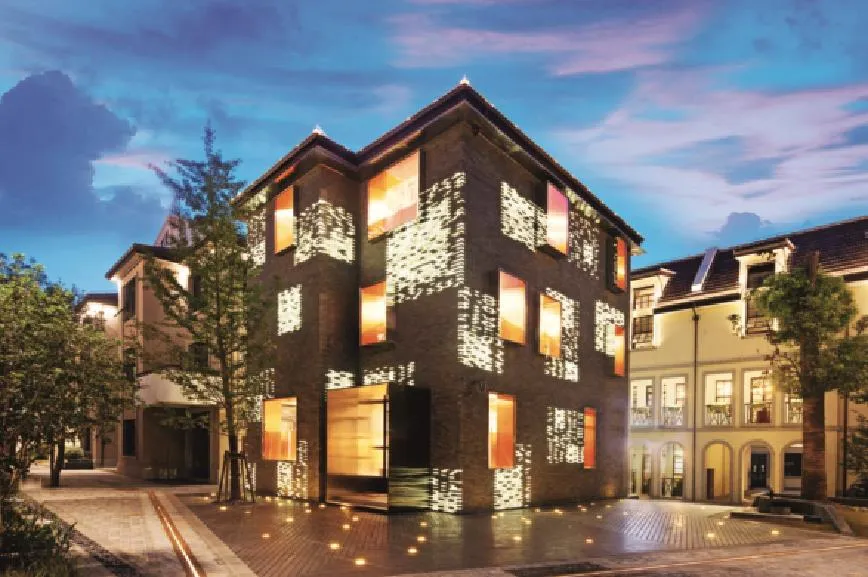Old Housing in West Shanghai - Symbol of the City's Living Culture
Old Housing in West Shanghai - Symbol of the City's Living Culture

Night view of Hengshanfang,a newly renovated neighborhood in Shanghai.
A city exists through its memories. Strolling along brick-paved Hengshan Road in the downtown Xuhui District,streets of tasteful Western-style garden houses greet the eye. Built about 100 years ago,they witnessed the heyday of old Shanghai when it was an oriental paradise for adventurers. Today,they take peaceful refuge behind tall,dense clusters of plane trees. Most of Shanghai's Western-style buildings,which number in the thousands,including 950 of extraordinary historical signifcance,are concentrated in a 4.3-square kilometer area in the western part of the city. They are the best embodiment of Shanghai's memories and culture. Thoroughgoing renovations have revived and brought them to a space where tradition and modernity interweave,and history and innovation intermingle.
Architecture evokes the past,present,and future of a city and its evolution. Hengshanfang is a typical Shanghai Longtang residence. It comprises 11 garden buildings and two rows of townhouses. The garden houses,built in Western style of wood and bricks,are mainly located in the southern part of the neighborhood. The townhouses in the north are of indigenous design. The different styles form a sharp but reconciled contrast. Recent renovations have retained the original style of these buildings and taken it into consideration when transforming the interior structure and space. The designer also introduced high-end businesses into this area in four main categories: innovative offces,boutiques,art,and catering. They inject vigor into the old neighborhood,making it more attractive to the local youth as well as tourists.
Wukang Road,at the core of the old residential area,bears a clear imprint of Shanghai's recent history. Built in 1907,it is site of many historical buildings and homes of celebrities in earlier times. Renovations included broadening the street and refurbishing its buildings,also with tourism in mind. In 2011,the street was named a National Historic and Cultural Street.
This venerable area is now a place for gatherings and celebrations. Last fall,for example,the Fuxing Art Festival,which included an innovative fair,parent-child wall art,bicycling,and concerts,took place. These cultural events encouraged people to chill out and enjoy the street scenery.

